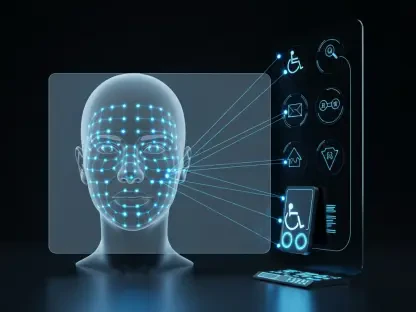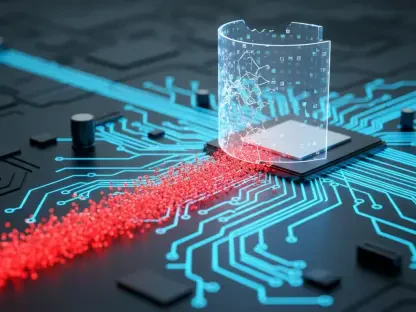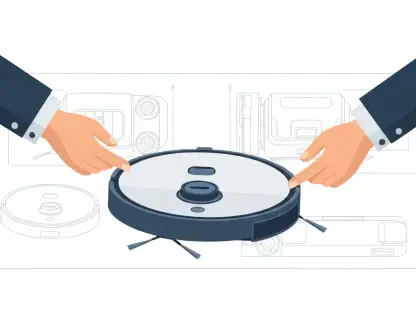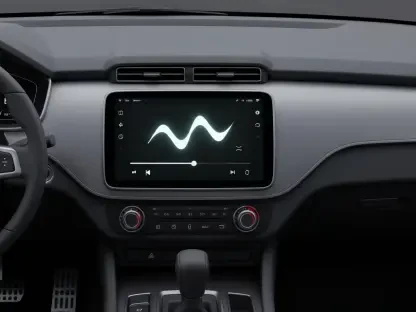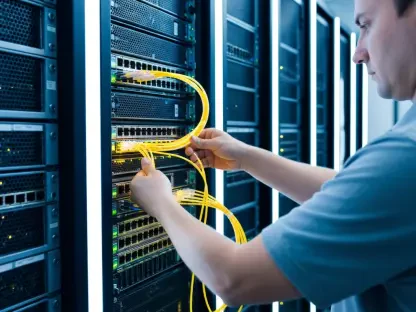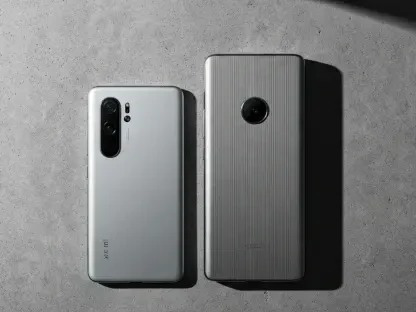The rise of the Internet of Things (IoT) is reshaping various industries globally, and healthcare in Saudi Arabia is no exception. As the kingdom strives toward its Vision 2030 goals, IoT is set to play a pivotal role in enhancing healthcare services. This article delves into how IoT is revolutionizing healthcare in Saudi Arabia, focusing on key areas like telemedicine, data analytics, and government initiatives aimed at transforming the sector.
The Role of Vision 2030
Government Initiatives Driving IoT Adoption
Saudi Arabia’s Vision 2030 serves as a guiding light for the nation’s advancements in various sectors, including healthcare. The plan emphasizes the importance of digital technologies to improve healthcare infrastructure. Substantial investments and strategic initiatives by the government support the adoption of IoT solutions, aiming to position Saudi Arabia as a leader in the regional digital health landscape. Vision 2030 not only identifies key sectors for growth but also outlines a comprehensive approach to integrating modern technologies with traditional healthcare systems, creating a more robust and efficient ecosystem.
Government initiatives focusing on IoT adoption are multifaceted. They encompass the development of pilot programs, incentives for healthcare providers to integrate IoT solutions, and collaborations with international technology firms. These measures are designed to ensure the smooth implementation of IoT across the health sector, providing a blueprint for future projects. Furthermore, the government is channeling funds into research and development to foster innovation. These efforts aim to localize technology development, which can lead to customized solutions better suited for the domestic market.
Infrastructure and Policies
To facilitate the integration of IoT, the Saudi government is laying down robust policies and infrastructure. By focusing on implementing high-speed internet and secure data management systems, the government aims to ensure seamless adoption of IoT in healthcare. These efforts are complemented by collaborations with private sector giants to bring in expertise and technological know-how. The establishment of dedicated technology zones and innovation hubs also plays a crucial role in creating an environment conducive to IoT adoption, fostering a culture of continuous improvement and innovation.
Policies are being crafted to ensure data privacy and security, which are critical in the healthcare sector. Regulations mandate stringent data protection measures, ensuring that patient information remains confidential and is used appropriately. The policies also cover interoperability standards, simplifying the integration of various IoT devices and systems across different healthcare platforms. By creating a standardized framework, the government aims to reduce barriers to entry and encourage more healthcare providers to adopt IoT technologies. These initiatives collectively are setting the stage for a more technologically advanced healthcare system in Saudi Arabia.
Telemedicine: A Cornerstone of Modern Healthcare
Bridging Accessibility Gaps
One of the standout applications of IoT in healthcare is the rise of telemedicine. In a country with vast geographical expanses, telemedicine offers a lifeline to remote areas where healthcare facilities are sparse. IoT devices enable real-time monitoring and virtual consultations, ensuring patients in remote regions receive timely and efficient care. This technology is particularly beneficial for chronic disease management, where consistent monitoring and quick access to healthcare professionals can significantly improve patient outcomes. Telemedicine also offers a viable solution for emergency scenarios by providing immediate medical consultations, irrespective of location.
Additionally, telemedicine helps optimize the workload of healthcare professionals by allowing them to monitor multiple patients simultaneously. This remote monitoring capability frees up valuable time for medical professionals, enabling them to focus on critical cases while ensuring that others are still well-cared for. Patients benefit from this approach as well—they save travel time and expenses, making healthcare more accessible and convenient. The widespread adoption of telemedicine is expected to bridge the healthcare gap in rural and remote areas of Saudi Arabia, making quality medical services more inclusive.
Managing Chronic Diseases
IoT is revolutionizing the management of chronic diseases such as diabetes and hypertension. Wearable devices and remote monitoring systems allow continuous tracking of patients’ health parameters. This real-time data is invaluable for healthcare providers in making timely interventions, thus significantly improving patient outcomes. Wearable devices such as smartwatches and fitness trackers offer essential insights into physical activity, heart rate, and sleep patterns, enabling a more holistic approach to chronic disease management. These devices send automatic alerts to healthcare providers if any abnormal condition is detected, facilitating early intervention.
Managing chronic diseases with IoT doesn’t end with data collection. The integration of this data with advanced analytics enables predictive healthcare, where potential health issues can be identified before they become severe. This proactive approach not only improves patient outcomes but also reduces healthcare costs by minimizing emergency room visits and hospital readmissions. For patients, this means a better quality of life and for healthcare providers, a more efficient and effective way to manage large patient populations. The continuous development of IoT in chronic disease management is poised to transform how healthcare is delivered, making it more proactive and patient-centered.
Technological Advancements and Data Analytics
Enhancing Patient Outcomes with Real-Time Monitoring
Technological advancements in IoT, such as improved sensors and connectivity, enhance patient outcomes through real-time monitoring. These devices collect data continuously, providing healthcare professionals with comprehensive insights into a patient’s health status. The immediate availability of this data enables quick decision-making, potentially saving lives. For instance, in critical care units, IoT devices connect various medical equipment to a centralized system, ensuring that any changes in a patient’s condition are detected instantly. This capability is crucial in scenarios requiring rapid medical intervention.
Real-time monitoring also extends to at-home care for patients, especially the elderly and those with chronic conditions. Devices such as smart pill dispensers ensure medication compliance by reminding patients to take their medicines and alerting caregivers if doses are missed. Wearable health monitors track vital signs and send automatic updates to healthcare providers. This real-time data helps in adjusting treatment plans dynamically, based on the latest patient information. The ability to continuously monitor patients and respond swiftly to any changes is transforming healthcare delivery, making it more responsive and tailored to individual needs.
The Power of Predictive Analytics
The integration of IoT with sophisticated data analytics paves the way for predictive analytics in healthcare. By analyzing trends and patterns in collected data, healthcare providers can predict potential health issues before they escalate. This proactive approach allows for preemptive action, reducing the severity of medical conditions and optimizing resource allocation. Predictive analytics can flag early signs of diseases, facilitating timely diagnosis and intervention. This is particularly beneficial in managing chronic illnesses, where early detection can lead to better long-term outcomes.
Moreover, predictive analytics helps in resource management by forecasting patient influx, thereby optimizing staffing and inventory levels. By analyzing historical data, healthcare facilities can better prepare for peak times, ensuring that there are enough medical professionals and supplies available when needed. This level of preparedness enhances the overall efficiency of healthcare services, reducing patient wait times and improving the quality of care. The fusion of IoT and predictive analytics is revolutionizing healthcare by making it more anticipatory, efficient, and effective, paving the way for a future where healthcare is personalized and proactive.
Segmenting the Market
Key Components of IoT in Healthcare
The IoT healthcare market in Saudi Arabia is segmented by components, applications, and end users, each playing a vital role in the sector’s evolution. The key components include medical devices, systems and software, services, and connectivity technologies, all of which contribute to a comprehensive IoT ecosystem. Medical devices encompass a wide range of equipment, from wearable health monitors to advanced imaging systems. These devices form the backbone of IoT in healthcare, generating vast amounts of data used for monitoring and diagnostics.
Systems and software are the next crucial components, providing the platforms and applications needed to analyze and interpret the data collected by medical devices. These software solutions enable seamless integration of different IoT devices, ensuring that healthcare professionals have access to a unified data view. Services, including maintenance, support, and training, are essential for the successful deployment and operation of IoT systems. Lastly, connectivity technologies like high-speed internet and secure communication protocols ensure that data can be transmitted reliably and securely, enabling real-time monitoring and remote consultations.
Diverse Applications
Significant areas of application for IoT in healthcare include telemedicine, connected imaging, and inpatient monitoring. Each of these applications addresses different facets of healthcare delivery, from remote consultations to advanced diagnostic imaging, thereby enhancing the overall quality of care. Telemedicine, as previously discussed, uses IoT to facilitate virtual consultations and remote monitoring, bridging the gap for patients in underserved regions. Connected imaging systems integrate diagnostic tools like MRI and CT scanners with IoT, allowing for real-time transmission of medical images to specialists for timely diagnosis.
Inpatient monitoring is another critical application, where IoT devices continuously track vital signs and other health parameters of hospitalized patients. This real-time data is crucial for ensuring quick interventions in case of any anomalies, thus improving patient safety. IoT also finds applications in surgical settings, where smart tools and equipment assist surgeons with real-time data, enhancing the precision and outcomes of surgical procedures. These diverse applications of IoT are revolutionizing various aspects of healthcare delivery, making it more efficient, accurate, and patient-centered.
Addressing Rising Healthcare Demands
Aging Population and Chronic Diseases
As Saudi Arabia’s population ages and the prevalence of chronic diseases rises, the demand for IoT-enabled healthcare solutions grows. Wearable health monitors and remote diagnostic tools cater to long-term health management needs, ensuring continuous and personalized care for the elderly and chronic disease patients. These technologies not only monitor vital signs but also provide insights into lifestyle factors such as physical activity and sleep patterns, enabling a more comprehensive approach to healthcare. The use of IoT in managing chronic diseases helps in reducing hospital visits and admissions, thereby alleviating the burden on healthcare facilities.
The aging population specifically benefits from IoT through assisted living technologies. Smart home systems equipped with IoT devices can monitor an elderly person’s daily activities, sending alerts in case of falls or any abnormal behavior. These systems provide peace of mind to families and caregivers, ensuring the safety and well-being of the elderly. Additionally, IoT-enabled systems can remind patients to take their medications and attend medical appointments, further enhancing compliance and improving health outcomes. The growing demand for such solutions underscores the critical role of IoT in meeting the healthcare needs of an aging population.
Ensuring Efficiency and Cost Reduction
The Internet of Things (IoT) is significantly transforming various industries worldwide, and the healthcare sector in Saudi Arabia is no exception. As the nation strives to achieve its Vision 2030 objectives, IoT is anticipated to play a crucial role in improving healthcare services. This comprehensive article explores how IoT is revolutionizing healthcare in Saudi Arabia, concentrating on critical areas such as telemedicine, data analytics, and government initiatives aimed at overhauling the sector.
Telemedicine, for example, utilizes IoT to enable remote consultations, reducing the need for physical visits to healthcare facilities. This advances access to medical services, particularly for those in remote areas. Additionally, IoT facilitates real-time data collection and analytics, empowering healthcare providers to make more informed decisions and offer personalized treatment plans. The Saudi government is actively supporting these innovations through strategic initiatives and investments designed to modernize healthcare infrastructure and services.
Overall, IoT is pivotal in advancing Saudi Arabia’s healthcare landscape, in line with the ambitious Vision 2030 program.


